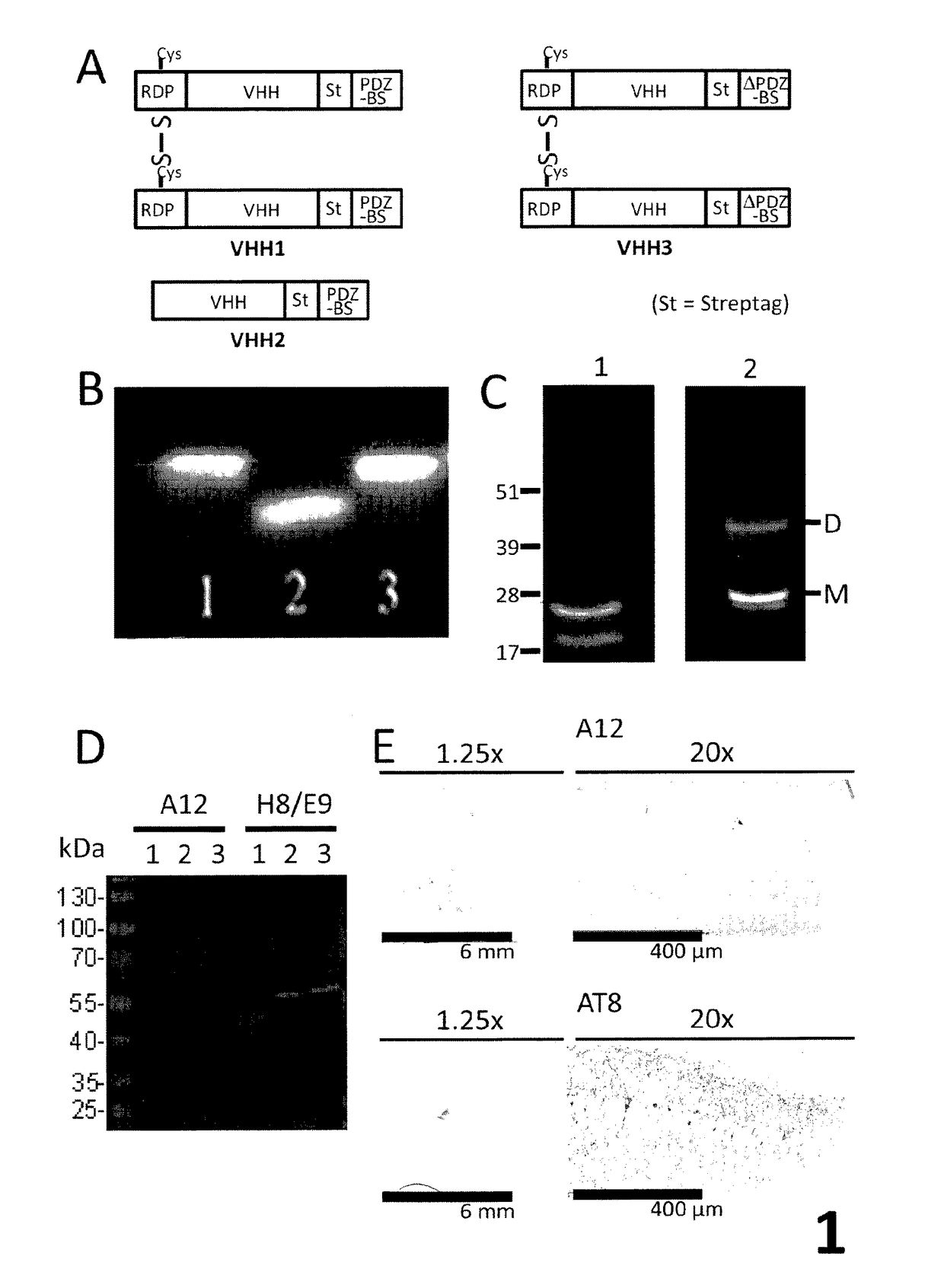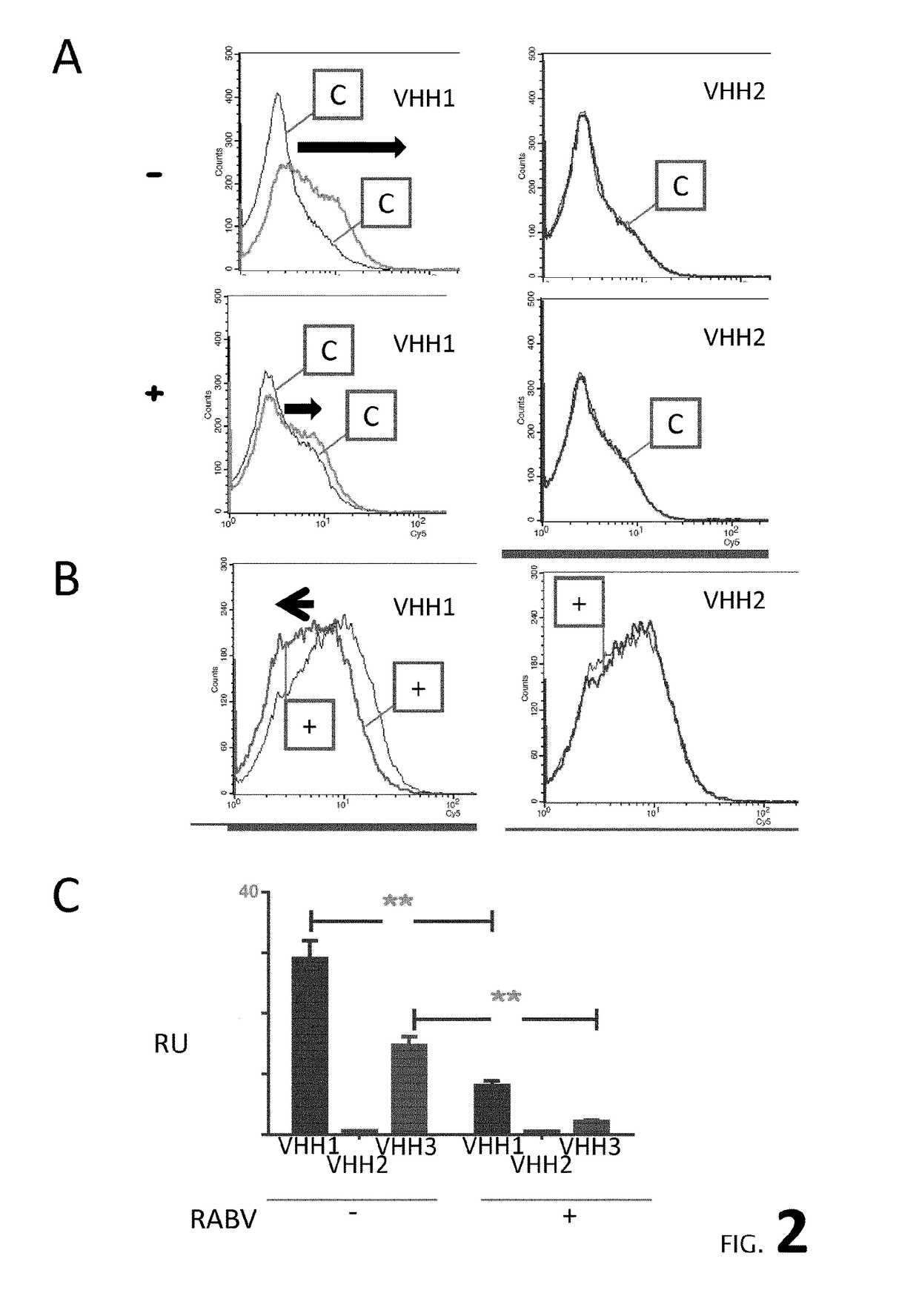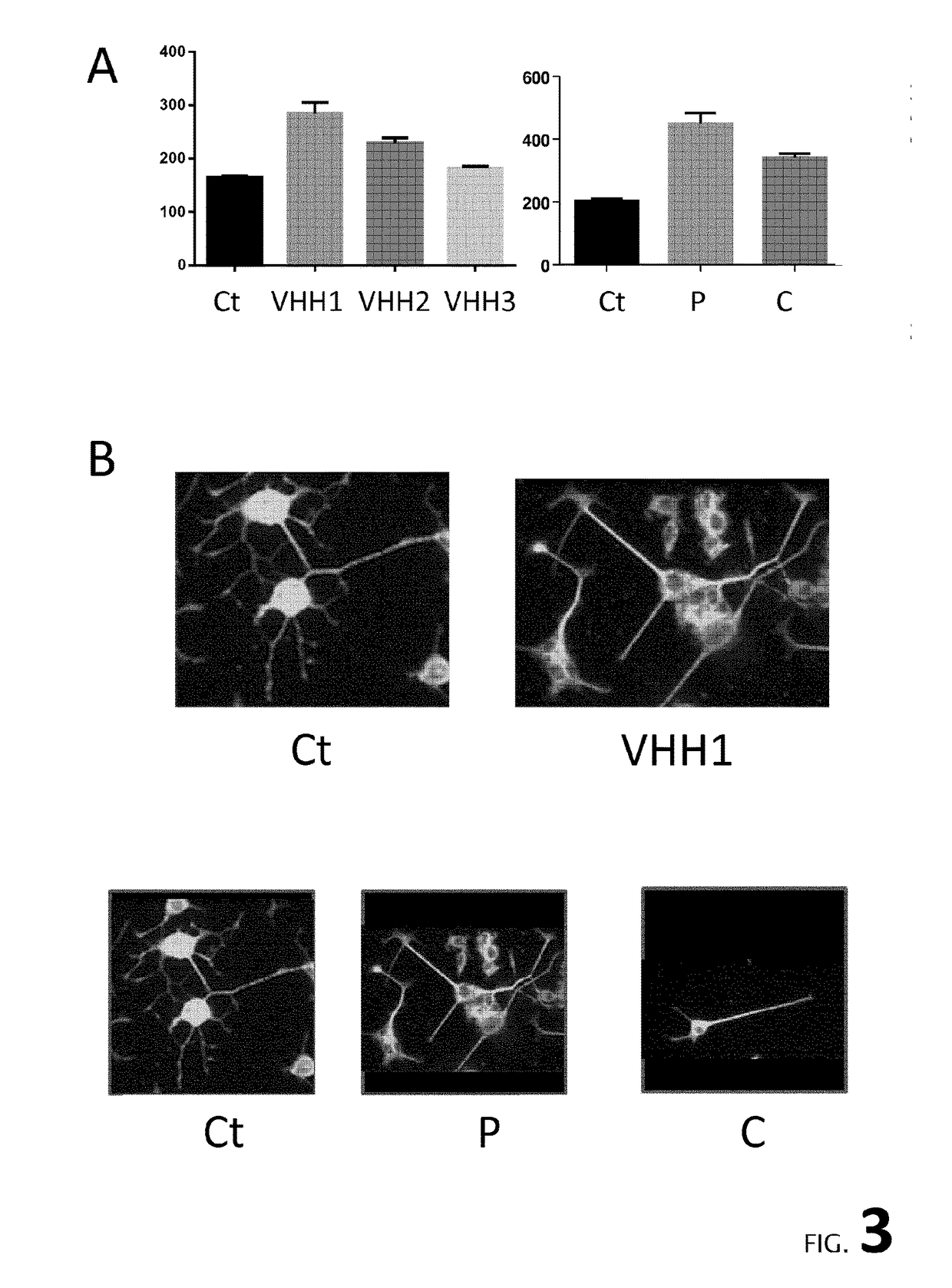New in vitro blood-brain barrier model
- Summary
- Abstract
- Description
- Claims
- Application Information
AI Technical Summary
Benefits of technology
Problems solved by technology
Method used
Image
Examples
example 1
VHH and VHH-Comprising Polypeptide Sequences
[0156]The VHH with the sequence of SEQ ID NO:3, named VHH A12, was selected from a VHH immune library. VHH immune libraries have been previously created as described in 1997 by Ghahroudi et al. One Alpaca has been immunized with a human brain hippocampus extract, isolated from an Alzheimer disease patient. This extract contains different proteins. mRNA extracted from circulating B lymphocytes were retrotranscripted. To select cDNA coding only for VHH and not for conventional antibodies, they have been amplified thanks to primers complementary to FR1 and CH2 regions. VHH sequences were cloned in the phagemid pHEN1 in fusion with the phage coat protein III (pIII), and the phagemid used to transform E. coli TG1 bacteria. The expression of recombinant VHH was induced with IPTG. After panning by phage display technology, individual colonies were selected, cultured and tested. When we have selected specific VHH, we performed a digestion step by ...
example 2
Cloning and Expression of Neurocargo-Neurovita Molecules
[0185]he neurocargo-neurovita gene sequences (VHH1: SEQ ID NO:12, VHH2: SEQ ID NO:14, VHH3: SEQ ID NO:16) were synthesized chemically by Eurofin MWG Operon company and inserted in the pASK-IBA2 plasmid (IBA, BioTAGnology, USA) under the control of the tetracycline promoter. In this plasmid the ompA signal sequence directs the expressed protein into the periplasmic space and is cleaved off during the translocation process. In the periplasmic space, disulfide bond-forming proteins which are properly folded can be found. The recombinant plasmids were used to transform XL1-blue E. coli bacteria (Stratagene, USA). Recombinant bacteria were identified by PCR and glycerol stocks were made. VHH-comprising polypeptides were expressed and purified from the bacteria periplasm as described by P. Lafaye (2008). Alternatively, proteins can also be extracted directly from the cytoplasm. The periplasmic extract was further purified by immunoaf...
example 3
Characterization of VHH A12 Neutral
[0187]VHH A12 was shown to have the following features: a basic pI (i.e. pI>8.5; in particular 9.86 for the VHH alone and 10.36 for the VHH1 polypeptide); no reactivity against a human brain extract (i.e. Sg tau4697) and a mouse brain extract (i.e. Tg 4510) and GFAP (i.e. glial fibrillary astrocytic protein) by western blotting; and no immunoreactivity on Tg 4510 mouse brain tissue by immunohistochemistry.
[0188]The specificity of the VHH of the invention (A12) as compared to a control VHH recognizing brain proteins (H8 / E9, identical to VHH E9, Perruchini et al.) was determined by western blotting on 3 different antigens: a human brain extract (Sg tau 4697), a mouse brain extract (Tg 4510) and on a purified protein, GFAP, a specific marker of astrocytes. As shown in FIG. 2, no bands were detected by VHH A2. Furthermore, VHH immunohistochemistry was performed from Tg4510 mouse tissues (Grueninger et al, 2010) harbouring NFTs. As a control, a specific...
PUM
 Login to view more
Login to view more Abstract
Description
Claims
Application Information
 Login to view more
Login to view more - R&D Engineer
- R&D Manager
- IP Professional
- Industry Leading Data Capabilities
- Powerful AI technology
- Patent DNA Extraction
Browse by: Latest US Patents, China's latest patents, Technical Efficacy Thesaurus, Application Domain, Technology Topic.
© 2024 PatSnap. All rights reserved.Legal|Privacy policy|Modern Slavery Act Transparency Statement|Sitemap



